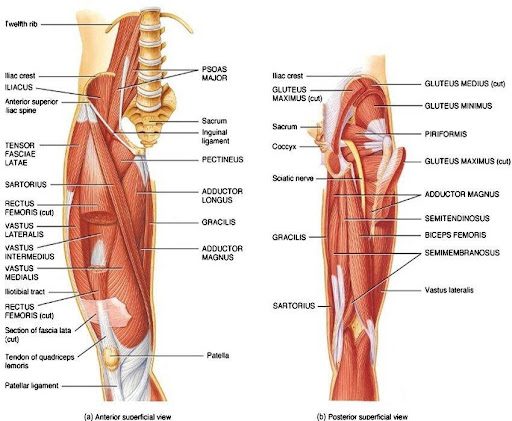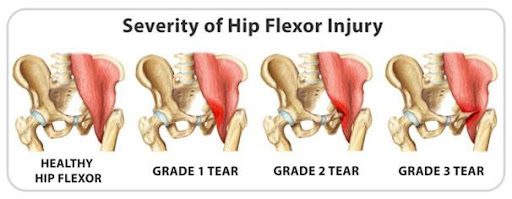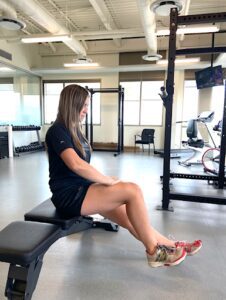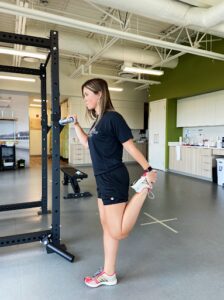How do you know you have a hip flexor strain?
With summer well underway, levels of sport and recreation over the past couple of months have increased dramatically. While the benefits of being active are endless, the transition from sedentary behaviours during the pandemic to a sudden increase in sport and recreation are resulting in the onset of nagging injuries.
An injury that is commonly seen is hip flexor strains. While the literature supports a relatively high incidence of hip flexor injuries amongst athletic populations, these injuries remain prevalent within the general population as well.
What is a hip flexor?
Before discussing ways of identifying a hip flexor strain and its associated causes, let’s review some anatomy. The hip flexor consists of 6 key muscles that contribute to hip flexion: the iliacus, psoas major, psoas minor, pectineus, rectus femoris, and sartorius (figure 1).
Due to the high degree of functional overlap between these muscles, they are often grouped together as they work in conjunction to flex the femur at the hip joint with some of these muscles additionally contributing to extension at the knee. In addition to this, the hip flexor muscles further contribute to lateral flexion of the lower vertebrates and allow for postural stability during various movements. Due to their role in hip flexion and postural stability, the hip flexors are responsible for many of the movements involved in activities of daily living such as walking, running, sitting, carrying a load in the opposite hand, and transitioning from lying down to sitting.

Strain vs sprain
Now that the anatomy of the hip flexor muscles and their actions have been considered, let’s further discuss the term strain. A strain refers to a stretch or a tear of a muscle or tendon (figure 2).
While the terms sprain and strain are often used incorrectly, a sprain refers to a ligamentous injury whereas a strain is an injury to the muscle and/or its tendon. Considering the role that the hip flexors play, hip flexor strains occur from the overuse of these muscles during hip flexion activities or from forceful contraction of these muscles while in a stretched position. Populations that appear to be most vulnerable to hip flexor injuries include cyclists, dancers, football players, runners, soccer players, those who practice martial arts, or individuals who perform any forceful kicking.

SPORTS MEDICINE: Hip flexor strain – a long term problem for hockey players
Signs and symptoms
While the clinical presentation of hip flexor strains largely depends on the degree of the injury as outlined in the figure 2, common signs and symptoms include:
- Pain and/or pulling to the front of the hip where the thigh meets the pelvis
- Pain with walking or running
- Difficulty coming up from a squat position or coming out of a chair
- Bruising and swelling to the front of the hip
- A noticeable bulge at the top of the thigh muscle (less common)
- Pain and potential weakness with resisted hip flexion (figure 3)
- Pain with passive extension of the injured hip (figure 4)


Recovery and rehabilitation
Depending on the severity of the injury, recovery timelines typically range from 3-8 weeks. Other factors impacting recovery include:
- age
- health
- a history of previous injuries to the area
- and the specific hip flexor muscle that is injured.
While the healing process begins once the hip is no longer being stressed in positions that further aggravate the injury, rehabilitation is essential even when tissue healing timelines are met to further strengthen the area in order to prevent re-injury especially in those involved in high level of sport and recreation.
Recovery
In regards to recovery and specific treatment guidelines for hip flexor injuries, an intricate balance between strength, mobility, and promotion of tissue healing is crucial.
Depending on:
- the severity of the injury
- initial stages of treatment include promotion of tissue healing by decreasing inflammation
- reducing the stress on the affected areas
- maintaining or regaining mobility of the affected area
- maintaining strength of the surrounding musculature
As recovery timelines are met, specific stretching and strengthening is progressed in order to further alleviate tension on the affected areas and increase function. When determining return to activity, signs of full recovery are more important than estimated timelines. Return to function is dependent on re-gaining full range of motion and strength, resolution of swelling and bruising, elimination of pain to the affected area with direct palpation and activity, and restoration or proper mechanics of both the affected and surrounding areas.
When should you see a physio?
Due to the intricacy of the hip flexor anatomy, a thorough history and physical examination is crucial when assessing an injury. When identifying a hip flexor injury, important investigation into the nature and location of symptoms, inciting events, aggravating and relieving movements and positions, and any concurrent or past injuries is very important.
These questions in part allow for partial differentiation between hip flexor strains and other conditions that may be present such as bursitis, tendinopathy, osteitis pubis, stress fracture, labral tear, etc. thereby ensuring an appropriate and effective treatment and rehabilitation plan.
Due to the high functional and postural contributions from the hip flexor muscles, it is important to consider both dynamic and static movements as well as risk factors that increase the likelihood of developing a hip flexor injury or re-injuring the area.
Some of these factors include surrounding muscle tightness and weakness, excessive or inappropriate training or activity with inadequate warm-up or recovery, joint stiffness, poor biomechanics and fitness, fatigue, muscle imbalances, etc. As with the treatment of any injury, a carefully taken history and physical examination are of paramount importance.
At Advantage Sport Medicine, our team of health care professionals are trained in assessment and are highly knowledgeable in injury identification and rehabilitation to get you back to doing what you love. Book your appointment today!
